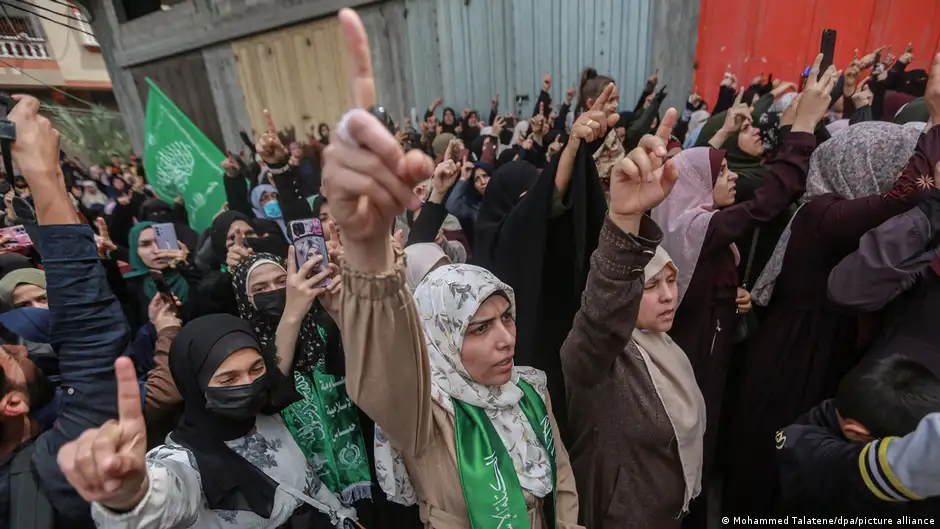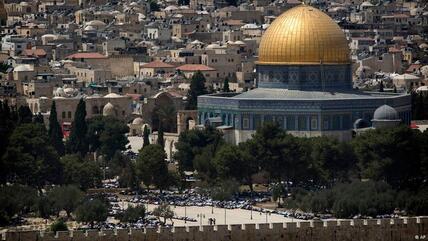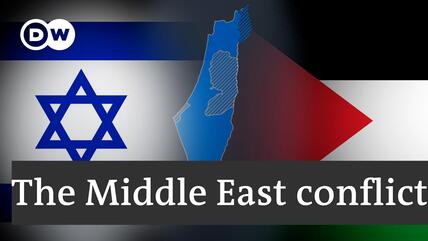The dark power of the "liberators"

Joseph Croitoru first published a book about Hamas in 2007, and at the time, it filled a gaping void. The book was updated in 2010. Now he has written another, titled Die Hamas. Herrschaft über Gaza, Krieg gegen Israel (Hamas. Rule over Gaza, War against Israel), but it could hardly be described as a new edition. After all, a great deal has happened in the intervening period: the ongoing Israeli blockade of the Gaza Strip, the ever-deepening divide between the two most important Palestinian parties, Israel's political shift to the right and multiple armed conflicts. Croitoru provides a detailed description of the years leading up to 7 October – without making the mistake of always telling the story from the perspective of the current catastrophe. Croitoru devotes two chapters to contemporary events at the end of the book.
Historian Croitoru succeeds in drawing a factual and detailed portrait not only of Hamas and its ideology, but also of Palestinian politics as a whole. After all, since the founding of Hamas in 1987, this has also been the story of bitter enmity between the Islamists and the secular factions of the PLO.
Croitoru's book begins with a potted history of the Gaza Strip, which after the 1948 Arab-Israeli war was primarily defined by the almost 200,000 Palestinians who fled there or were displaced there. This period was followed by almost two decades of Egyptian occupation, with a little-known interruption during the 1956/57 Suez Crisis. Croitoru describes how even back then, Israel considered permanently occupying the Gaza Strip and establishing settlements there.
For Israel, Hamas was once a welcome rival to the PLO
From the 1960s onwards, Ahmad Yassin managed the religious, social and political activities of the Muslim Brotherhood in the Gaza Strip. Hamas emerged from the ranks of this organisation in 1987. From the Israeli perspective, the movement was initially seen as a welcome rival to the still militant PLO.
But that changed with the start of the peace process. Now, Hamas wasn't just waging a bitter and violent war against its secular domestic rivals, but also against Israel. With increasing support from Iran, Hamas launched a wave of suicide attacks against Israeli civilians.
Croitoru conducts a thorough analysis of the 1988 Hamas Charter as an expression of the group's Islamist-motivated but now also nationalistically based rejection of the two-state solution in favour of a "jihad" aimed at the "liberation of Palestine". At the same time, the charter was evidence of the movement's deeply rooted anti-Semitism and anti-liberalism.
Hamas's efforts to stop the Oslo process were successful. Benjamin Netanyahu and Ariel Sharon did everything in their power to prevent the Palestinian state promised by the PLO. Following the escalation of the second intifada, in which the two Palestinian rivals attempted to outdo each other's violent tactics, the secular faction led by ailing President Yasser Arafat, besieged in the ruins of his official residence, was left in tatters.

Zeroing in on the Middle East conflict
In his latest book – "Al Aqsa oder Tempelberg " – historian Joseph Croitoru traces the struggle for Jerusalem's most holy sites, warning that a storm is brewing in the Temple Mount conflict. Daniel Bax read the book for Qantara.de
Hamas's landslide election victory in 2006
The secular group's weakness played into the hands of Hamas, which secured a landslide victory in national elections in 2006. According to Croitoru, the movement hadn't really changed, but had simply decided to play the "democratic game" to realise its Islamist goals. The consequences of the international community's non-recognition of the 2006 Hamas government and the 2007 failure of the unity government are well-known: a bloody civil war and the Hamas coup in the Gaza Strip.
Croitoru provides an exhaustive account of the impact of Hamas's authoritarian rule in the Gaza Strip and the surreptitious Islamisation of public life, justice and administration. The growing influence of Hamas's military wing in particular is seen as one of the factors contributing to 7 October.
However, Croitoru's book does not devote sufficient attention to other societal structures in the Gaza Strip and the continued existence of critical public and civil society, which endured even under the most difficult conditions and despite censorship: for example on the part of independent journalists and human rights organisations that not only denounced Israeli violations of the law, but also courageously continued to criticise Hamas and stand up for its victims.

Seven uncomfortable truths
Anyone wanting to fully understand the current Middle East crisis must face up to realities on the ground. For many, however, this is at odds with the schematic picture they have in their heads. Here are seven uncomfortable truths crucial to de-escalating the situation and finding a solution
The revised charter of 2017 caused confusion
Although from Croitoru's account one might get the impression that 7 October was an almost inevitable developmental outcome, until recently many observers were unsure how best to classify Hamas.
In Croitoru's view, the revised Hamas charter of 2017, which could among other things be read as an implicit recognition of 1967 borders, caused confusion in this regard. On the other hand, he believes the movement's pursuance of the military route was an obvious outcome. After all, he writes, the leader of Hamas's political wing, Ismail Haniyeh, generally regarded as a "moderate", had already demonstrated unity with the Al-Qassam Brigades, the group's military wing.
But the Israeli government also assumed that Hamas had no interest in an escalation. For its part, Netanyahu's extremist coalition was preoccupied with the large-scale Israeli protest movement; in addition, military units had been withdrawn to the West Bank due to escalating settler violence.
In the final two chapters, Croitoru describes events since 7 October in a matter-of-fact and objective manner. He leaves no room for any doubt – both over the scale of the Hamas massacre and the catastrophic dimensions of the war in Gaza, in which he sees at best tenuous and often only "formulaically" presented Israeli justifications for the sweeping destruction.
Outlining future prospects is challenging
There's a limit to how much one can describe an on-going war. Although the book holds back on its predictions – which is most likely due to its extreme topicality – it would have benefited from some further reflection on the future of the Gaza Strip and Hamas itself. After all, Israel's declared ambition to "destroy" Hamas is unlikely to be realistic.
The wealth of detail in Croitoru's book is just as impressive as the factual presentation. At a time when the discourse is for the most part agitated, polemical and often infused with a great deal of ignorance about Hamas, this book deserves unreserved recommendation.
© Qantara.de 2024
Translated from the Germany by Nina Coon
Joseph Croitoru: Die Hamas. Herrschaft über Gaza, Krieg gegen Israel. Published by C.H. Beck, Munich 2024, 223 pages, €18 (eBook: €12.99)